Update (March 18, 2022): Gran Turismo 7's servers are now back online, making both its single-player career mode and multiplayer components accessible again. Developer Polyphony Digital released another update following the game’s server disruption alongside a statement about the issue.
Speaking in a blog post , the studio’s CEO and producer on Gran Turismo 7 Kazunori Yamauchi explained the need for extended server maintenance following the launch of the 1.07 update.
“Immediately before the release of the 1.07 update, we discovered an issue where the game would not start properly in some cases on product versions for the PS4 and PS5,” Yamauchi said.
“This was a rare issue that was not seen during tests on the development hardware or the QA sessions prior to the release, but in order to prioritize the safety of the save data of the users, we decided to interrupt the release of the 1.07 update, and to make a 1.08 correctional update.
“This is the reason for the delay. My sincere apologies for the late report to everyone.”
He went on to comment on GT7’s microtransactions and the reduction to in-game credit payouts that had been introduced in the 1.07 update to the anger of many fans.
Yamauchi said that while he wants users to enjoy the game's cars and races without microtransactions, “the pricing of cars is an important element that conveys their value and rarity, so I do think it’s important for it to be linked with the real-world prices.”
“I want to make GT7 a game in which you can enjoy a variety of cars lots of different ways, and if possible would like to try to avoid a situation where a player must mechanically keep replaying certain events over and over again.”
He concluded by asking fans to “watch over the growth of Gran Turismo 7 from a somewhat longer-term point of view”.
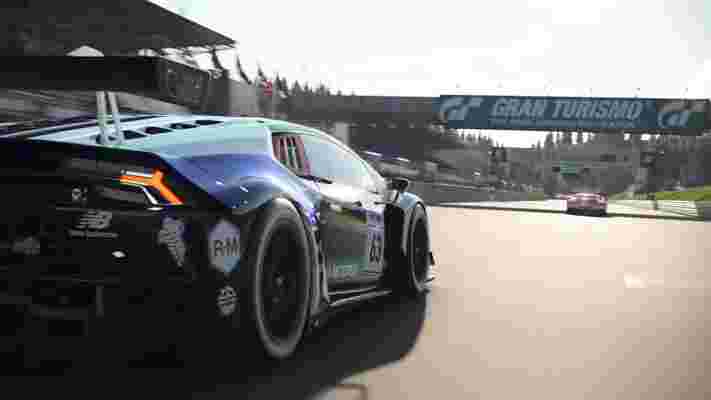
Original story (March 18, 2022): Unscheduled server maintenance has made Gran Turismo 7 largely unplayable for the past 24 hours, following the rollout of its latest update.
Much of the game’s content, including its single-player career mode and competitive multiplayer, can only be played if you’re connected over the internet to its servers. With those servers down, only Gran Turismo 7 ’s add-on arcade mode is available to play.
Developer Polyphony Digital initially took the servers offline for planned maintenance to accompany the release of the game’s 1.07 update. In a March 17 blog post , it announced the maintenance period had been extended. But it didn't mention what the underlying problem was, or for how long the servers would be offline. And we're still waiting for them to go live.
“Due to an issue found with Update 1.07, we are extending the current server maintenance period. We will confirm the completion time as soon as possible,” Polyphony said in the blog post.
“We apologize for any inconvenience this may cause and ask for your patience while we work to resolve the issue.”
That’s not the only problem affecting players. The new update has drastically reduced the credit payout earned by completing races. The patch requires you to grind for longer to unlock the game’s top-tier vehicles, pushing players towards GT7's costly microtransactions.
The update does promise some improvements though. According to the patch notes , it fixed a bug that made certain license tests and missions almost impossible to beat. It also introduced a new Broadcast Mode designed for YouTube and Twitch livestreamers. With that mode activated, all music tracks that may trigger copyright infringement will be removed from the game’s playlist. So livestreamers won't accidentally land themselves in any legal trouble.
This funky glow-in-the-dark e-bike will help you stand out from the crowd
Looking for an e-bike to replace your car? French bike builder Calendar might have just the thing: an electric cargo bike that can carry up to 200kg, folds down in a few seconds, and glows in the dark to keep you safe at night.
Electric cargo bikes were once the domain of stores and couriers, but there's increasing demand for them as a practical, green replacement for a second car. Last year, Raleigh launched the Stride range (an electric bicycle and tricycle that can lug loads of 80kg and 100kg respectively), and BMW's design for a weird tilting cargo e-bike became a reality.
The biggest disadvantage of these electric workhorses is their weight and sheer size. The Raleigh Stride 2 tips the scale at a mighty 60kg, while the Stride 3 is 75kg, and by their very nature, both are much longer than a typical bicycle. That's not a problem when you're riding, but if you need to store them, it could be a real issue.
As ebiketips reports, the Calendar Longtail Max solves that problem with an aluminum frame that folds down small enough to be wheeled along single-handed. Unlike many folding e-bikes , it's not intended to be carried any distance, but the ability to compress it down means it's much easier to fit into a corner out of the way.
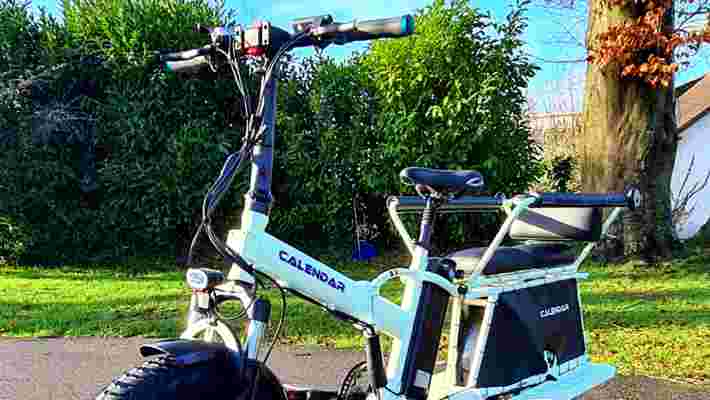
The frame folds in half, while the handlebar and pedals compress down to reduce the bike's width. Like the excellent MiRider One , it's equipped with small caster-style wheels that allow you to drag it along while compacted, and it appears to clamp together securely rather than being held closed with a flimsy strap (a problem we've encountered with some other folding electric bikes).
Glow for it
On the tech side of things, the bike comes with a 250W motor, 260Wh battery for a maximum range of about 30 miles, hydraulic front and rear brakes (critical when you're carrying heavy loads), and a color LCD display. Calendar doesn't specify, but since the Longtail Max is built for riding in the EU, it seems safe to say it's a class one e-bike with a top speed of 9.6kmph.
The bike is equipped with front and rear fenders as standard, and you can pick extras like backlit pedals for an additional fee. Unlike many e-bikes, the Longtail Max lacks built-in front and rear lights, but Calendar has made sure you'll be visible when riding at night by spraying the aluminum frame with a coat of photoluminescent paint. Chic? Perhaps not. Practical? Absolutely.
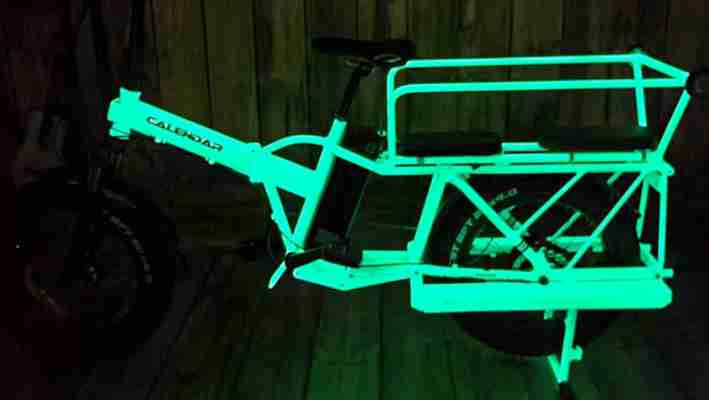
The Longtail Max is available now direct from Calendar Bikes for €3,990 (about $4,400 / £3,300 / AU$5,800), or you can upgrade to the Longtail Max Plus with extras like a padded seat for passengers and suspension seat post for €4,590 (about $5,000 / £3,800 / AU$6,700).
Ditching my smartwatch helped me rediscover my love of running
The best smartwatches offer loads of fancy features for regular runners, and I've tested gadgets with tons of tools that helped me improve my speed and timings.
These features range from built-in GPS, so you can track where you went, to accurate breakdowns of the different legs of your journey, and even modes that tell you how long you need to rest between workouts.
But after using running tech for years – smartwatches, running watches and fitness trackers – I've started to realize that they can be more of a curse than a blessing.
Getting run-down
I've tested quite a few smartwatches and wearable fitness tools in my time at TechRadar – I even used to write a fortnightly workout column – and I became reliant on using these devices to track my time, distance and stats. I used to run three or four times a week, and do a home workout daily.
That is, until Black Friday, which is a horribly busy time for tech journalists. I was working days of 12 hours or more, often overnight, and it completely ruined my running schedule. I didn't exercise at all for several weeks, as I didn't have the time or energy.
Exercising afterward was... a mixed bag. It's hard to build up your strength and stamina after losing it so dramatically, and the smartwatches actually made it a lot harder.
Because I used my smartwatch all the time, I already knew the exact timings for my different routes. I knew my 'standard' route, around three different London Underground stations near me, initially took me 45 minutes, but I'd managed to reduce that to an average of 42 minutes, and a personal best of 39 minutes.
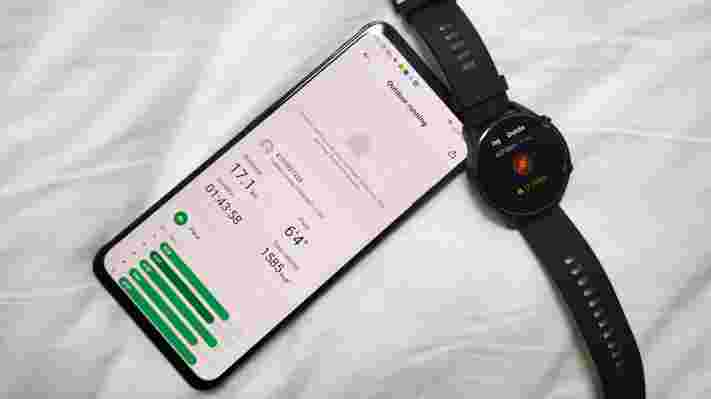
I knew how long it'd add if I did a warm-up lap of the park, took a different route down to the river, or instead ran to a nearby Heath. Each of my regular and beloved routes had their personal best (PB) times ingrained in my head.
But after letting my exercise routine fall to pieces, I wasn't even getting close to these times. My standard route took me about 48 minutes, and even hitting that time felt grueling. It was the same for my other tracks. It was disheartening.
And all the while, the smartwatch strapped to my wrist was reminding me of my poor times, of how much further I had to run, of how high my heart rate was getting. The trackers became constant reminders of my poor health. So instead of constantly getting insulted, I just stopped running.
Learning to run again
After a few disappointing runs in December, I gave up regularly running or working out. I didn't need to be reminded of my inability to get anywhere near my PB or hit the same number of reps as before.
This, obviously, was something of a Catch-22 situation. I wasn't running because my timings were awful. My timings were awful because I wasn't running. It was best just to avoid it altogether.
Every time I even considered going for a run and booted up a smartwatch or fitness tracker, it'd remind me "you haven't been on a run in 50, 60, 70 days. You idiot, Tom".
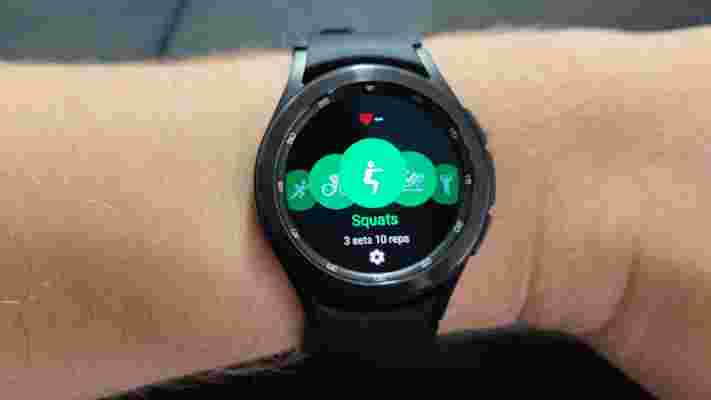
But then I moved house. I moved away from all the routes I'd carefully worked out, all the distances etched in my mind and the timings and personal bests attached faded away. I was in a new part of the city, with no numbers or figures to worry me.
And so one sunny day, I did something unthinkable – I just laced up my running shoes, left the house, and ran. I didn't bring my phone or my running headphones, especially not my smartwatch. With only a water bottle and my house keys, I hit the road.
I live fairly near Hyde Park, a large open space in London, and found myself running around the outskirts of it until, with a shrug of my shoulders, I set off down one of the tracks that bisect it.
If you know Hyde Park, you'll know that these tracks aren't all direct lines – they jut into open spaces, cut across each other, lead to other winding tracks. I wasn't following any predetermined direction or trail, just running where my feet took me.
It was a refreshing trip into nature (well, as natural as you can get for a park in the middle of a metropolis), where my route was dictated by my whim and my music was just the sounds of the birds and dogs.
When I got back, I had no idea how far I had run, or how long I'd been going. And it was an incredible experience – I'd lost myself in the sublime feeling of running, the joy of putting one step in front of another.
The way I felt about the run wasn't quantified by the metrics or stats provided by a wearable gadget, or by comparisons to previous trips, just by how good I felt after the run.
I had an even stronger response when running down a nearby canal a week later. I did bring my phone this time for music, but again ditched the fitness tracker and didn't time myself.

I don't know much about the canal I ran by, other than the fact it goes on for miles and miles and miles. And the more I ran from central London through the outskirts of the city, seeing my surroundings change again and again, the more I seemed to enter a timeless state.
This was an adventure – not in the sense that tech brands use to try to sell gadgets, by showing off a fancy GPS that works in mountains or modes that track your hill-climbing speed. I wasn't in the wild, I was in Park Royal, but without knowing my location, how long I'd been running, or how far I'd gone, I was untethered from all those meaningless numbers.
I kept running alongside the canal, kept turning around corners into further-unknown tracts of land, kept wondering 'what's after this next bend?' 'what will the next area be like?'. After being repressed through two years of lockdown, my wanderlust was rearing its head.
After a long while, I reached a threshold. I knew if I kept going, kept seeing what the canal had in store, I'd never want to turn back (I was only meant to be on my lunch break from work – perhaps going on my endless run in this limited slot of time was a poor idea). And so I turned around and retraced my steps.
This, to me, is the joy of running. Being lost in the feeling of your feet hitting the ground, and embracing whatever path finds itself graced by your shoes. Forgetting about silly stuff like time, distance, and heart rate, metrics that ground us in the boring realities of exercise, and instead, seeing what the horizon has in store.
I don't think I'd be able to have this experience of sublimity if I was using a smartwatch, if I had a device strapped to me that kept silently screaming 'you've been running for 15 minutes,' 'you've traveled 1km'. I needed to lose those numbers to find my enjoyment of the trail.
Keep a watch on it
I can't be the only person who feels trapped in their constant need to out-do themselves, to make every circuit faster or longer or more efficient than the last. But this distracts from the fun escapism of outdoor exercise.
Even if you don't think you're getting burnt out on your self-comparison, I'd recommend trying this out: take off your smartwatch, and run a route you've never gone before. Don't worry about the timings, or where you are, just run until you're getting tired, then turn around and come back.
If you have a natural space to run in, that's great, but it doesn't matter. Try to avoid doing repeated circuits of the same location – it's good if you don't really know where you're going (stay safe though, obviously).
For people who like to measure every step they take, this workout is going to be a write-off. It isn't going in your permanent record – even you're not going to know how long you ran, or the distance. Not only are those metrics not the point, but not knowing those things is the core of this exercise.
Hopefully, by unshackling yourself from all these numbers, you'll find yourself running because you want to, not because your fitness tracker says you have to. I hope it helps. If not... well, you still learned something about the way you work, and that's great too.
Running is about escaping your worries, after all, not about adding to them. So if you feel your fitness tracker is doing more harm than good, you need to get rid of it.
Is this all to say that smartwatches and running watches are bad? Absolutely not, different people work in different ways, and some people like being tracked and having figures to contextualize each action. And I can't even guarantee I won't wear these devices ever again – my job is literally to test tech, after all.
But when I'm not testing a workout wearable, I do know what I'll be doing – unfastening the watch strap, pointing myself in a new direction, and letting the road take me somewhere I've never been before.

